Small decisions can have big consequences. Not just the consequences you expect, but lots of little and not-so-little ripple consequences spreading out in all directions. And the next thing you know, you’re making Major Lifestyle Changes.
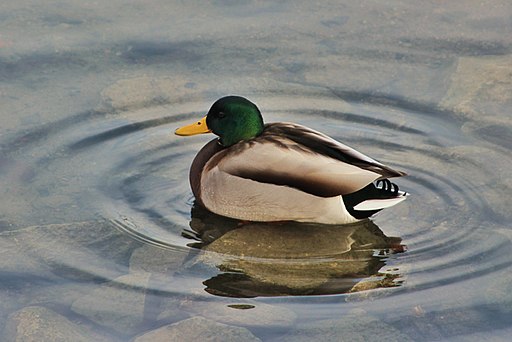

Old-Fashioned Fruitcake
Small decisions can have big consequences. Not just the consequences you expect, but lots of little and not-so-little ripple consequences spreading out in all directions. And the next thing you know, you’re making Major Lifestyle Changes.

It is possible (I hear) to write a book entirely digitally, from inkling (inklessling?) to final draft. But if you’re a lover of stationery such as myself, such a prospect rather chills than cheers. This list is for you.
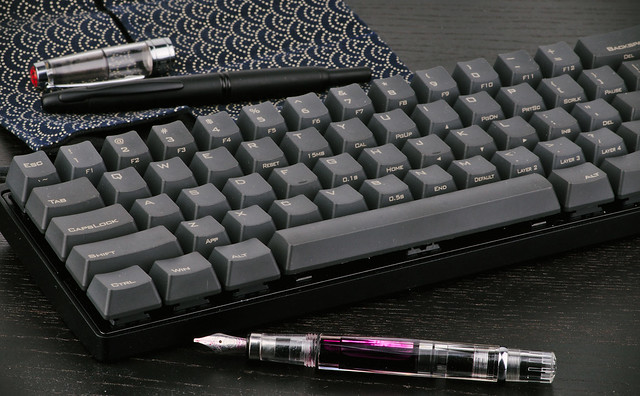
The first requirement of writing a book is, of course, a Pen. Now, you could use an endless supply of disposables, but it would be much more ecologically friendly – as well as more pleasant and aesthetically pleasing – to use a fountain pen. I wrote the first draft of Restoration Day with an old green Faber-Castell, and then bought myself a TWSBI Diamond Mini to celebrate. It is this latter that I shall be using for the first draft of the new book.
A pen is, of course, of little use without Ink (except in case of emergency tracheotomy; do not try this at home). Here is where the fountain pen really comes into its own: you can have pretty much any colour you choose – and some even come with scents. I picked Diamine Majestic Purple as the thematic colour for Restoration Day, and over 160,000 words later, I’ve only used about 2/3 of the 30mL bottle. For this new book (I really must come up with a good working title) I shall be using Diamine Kensington Blue.

It is true that ink comes in cartridges as well as bottles, but I say leave ink cartridges to printers. A cartridge is, after all, just a way to throw out part of your pen instead of all of it. And if you are worried about needing to refill on the go, get a TWSBI pen with one of their plug-in ink bottles. All the convenience, none of the mess, and it looks great on your desk. (No affiliation, just a satisfied customer.)
Having sorted out your basic writing implement, the next thing you need is something to write on. I would suggest – particularly if you are not yet sure whether your idea has what is known as “legs” – that you do not launch straight into a proper book. Instead, have a Noodling Notebook. This can be as flash or as plain as you like: I used a 3B1 with an evocative pattern glued to the cover.
Fleshing out your idea – what a grotesque expression; let us depart from it – exploring and filling out your idea in your noodling notebook will either fill you with such enthusiasm that it is clear a larger book will be required; or make you realize that as fun as the idea was, it isn’t enough to carry a book. In which case you at least have the consolation that you haven’t wasted your stationery treasure on a few scant pages of notes.
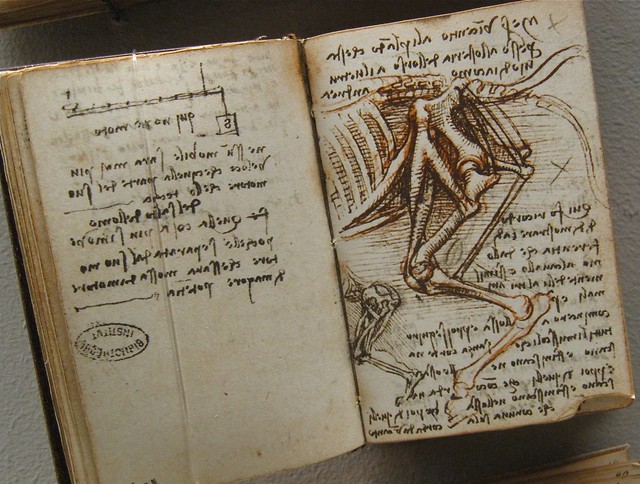
Once you get to the point that your noodling is starting to slop over the edges and grow right out of your notebook, you may think that it is time to take to the proper book. You would be wrong. Don’t believe me? Write down all the juicy little scene ideas which have sprouted out of your noodling on to Index Cards. (Note: not every idea constitutes a scene.) Then lay them out in the order indicated (a pinboard avec pins may assist with this, unless you have a large flat surface which is not otherwise encumbered with meals, cats, sewing etc).
According to Larry Brooks, a novel has, at a rough estimate, about 60 scenes. Do you have 60 cards with scene ideas on them? Alack! It is not so. This can be a rather depressing moment, when you realize that your lofty dreams are in fact exceedingly vague in the middle, but it is better to realize this now than after you have written 30,000 words and realize it’s not going anywhere. (Take it from someone who knows.)
Hence the cards. They also constitute a significantly easier to re-engineer form of your novel than an actual manuscript; but they’re easier to take in at a glance than a page of notes on a screen. Plus there is the possibility of colour-coding!
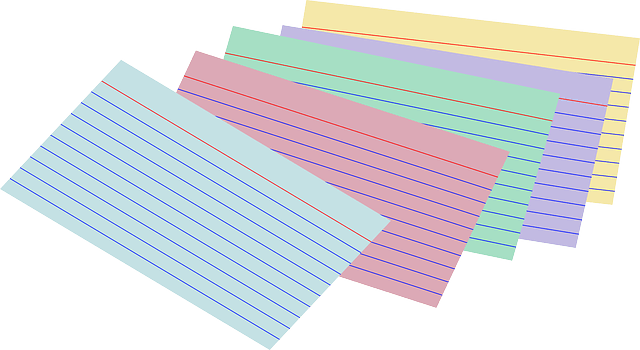
Finally, you are ready to write the book itself. What do you choose? Some may like to work their way through a ream of paper (one word of advice: paperweights), while others use what for want of a better term I will call Exercise Books. I wrote Restoration Day in eight large ugly ring-bound books – left pages only as I am left-handed when writing and it is exceedingly uncomfortable as well as messy to write with your hand resting on a large metal spiral.
For the new book, I have decided to treat myself. I purchased two Paper Lane A4 80gsm 240-page 7mm-ruled FSC hardback “journals” in blue (and on sale, yay!). The pen loop is rather too small for the TWSBI (another point in favour of fountain pens as opposed to disposable ball-points: you aren’t gripping a tiny barrel for hours on end); but I expect the storage pocket will come in handy.
Which brings me to the last of the six sorts of stationery: the classic Bits of Paper. Yes, you could just use odd bits of whatever comes to hand – old envelopes, receipts, the back of an unwary piece of A4 that strayed on to your desk – but you are much less likely to lose your thoughts, notes, lists etc if they are on pieces of paper which are unequivocally To Do With This. (This also avoids the drama of losing yesterday’s notes and ransacking your desk, only to find that they are on the reverse of today’s notes.)
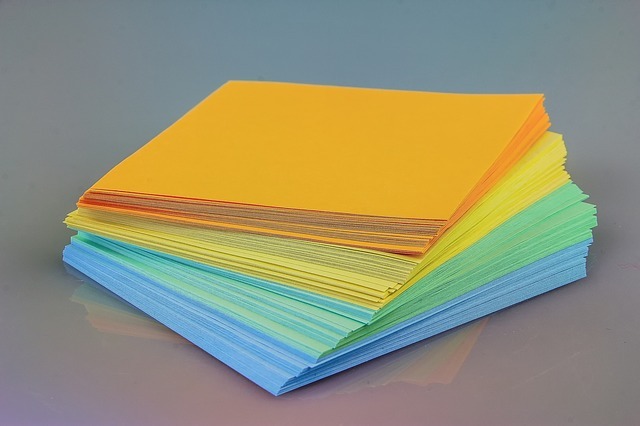
I like to make a quick précis of what’s going to happen next when I break off for the day, so as to jog my memory quickly back into the flow the next day. Also useful for figuring out exchanges in the right order, diagrams, and a myriad other uses. Consider getting a memo cube or scribble pad in your thematic colour, to be used only for that project. That way, when you see a piece of it floating around your desk, you’ll know what project it belongs to – and when you’re missing a note it’ll be easier to find.
Those are, of course, merely the basics. Truly dedicated stationery-lovers will no doubt find a dozen other openings for stationery in the process of writing a book. Suggestions?
Today I thought I would indulge my stationery-geek side (and, hopefully, yours) by introducing you to my writing instruments. (No, I haven’t given them names. Yet.) Illustrated mostly with other people’s pictures, because mine aren’t much to look at.
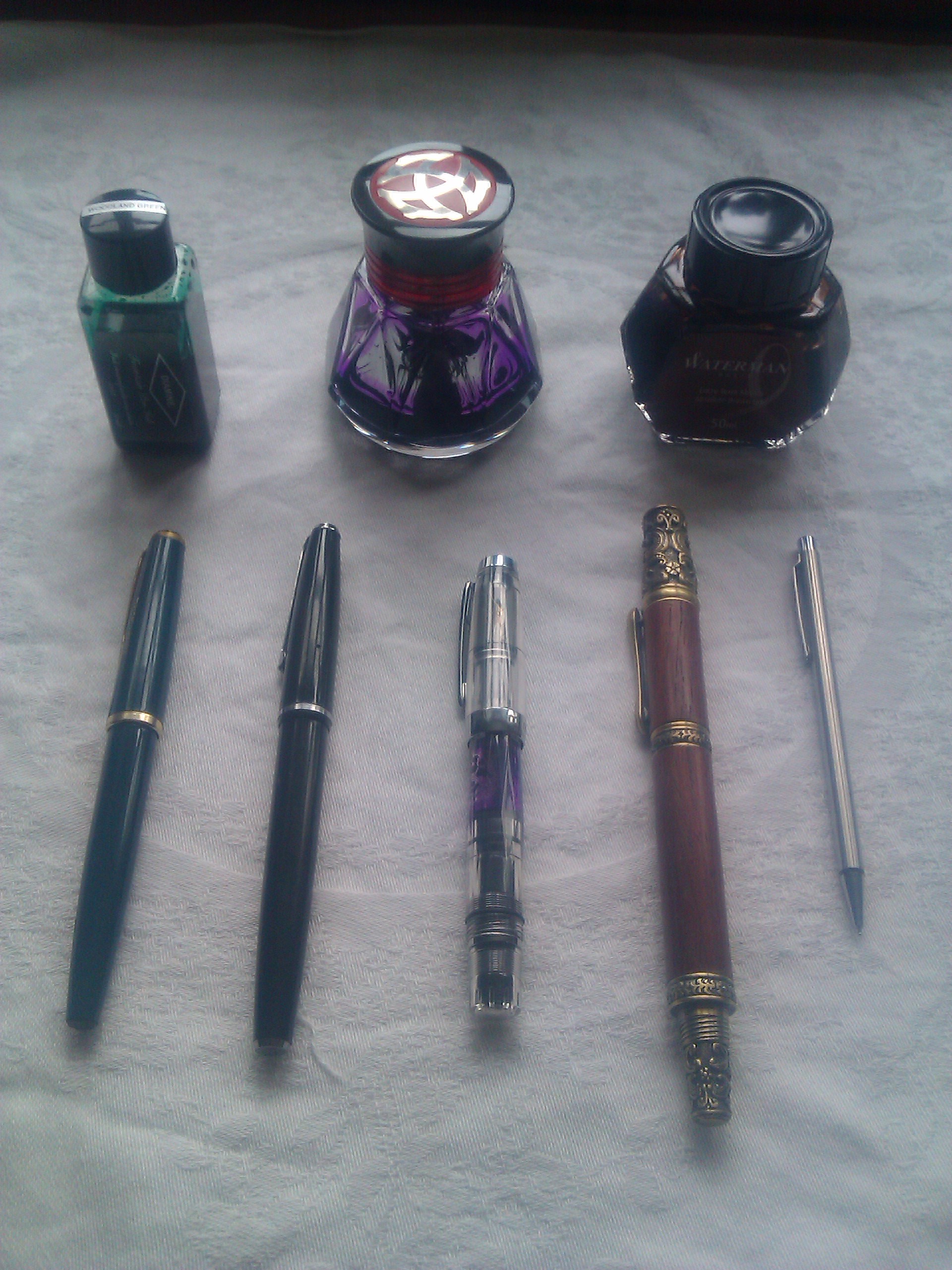
First in seniority is the green Faber-Castell (with goldish accents) which I found, fully functional, in a box of disused fountain pens which was passed on to me by my husband’s family when they found I was interested in such things. (Now that’s the kind of family you want to marry into.) It was this pen that inspired my love for piston-filling fountain pens, and I used it to write the epically large first draft of my WIP. These days it contains Diamine Woodland Green and I use it mostly for writing in my spiritual diary.
From the same box of fountain pen goodness came the Platignum Shorthand Pen – black with silver accents. It uses a rubber sac with a squeezy bar to fill, with the downside of not being able to tell how much ink is left in it. Despite that drawback, it is rapidly becoming my go-to pen for general writing – shopping lists, to-do lists, notes – because it has such a fine line and isn’t too wet, so works well on general-purpose paper. It currently contains Waterman’s Havana Brown (now called Absolute Brown for Absolutely no reason that I am aware of.)
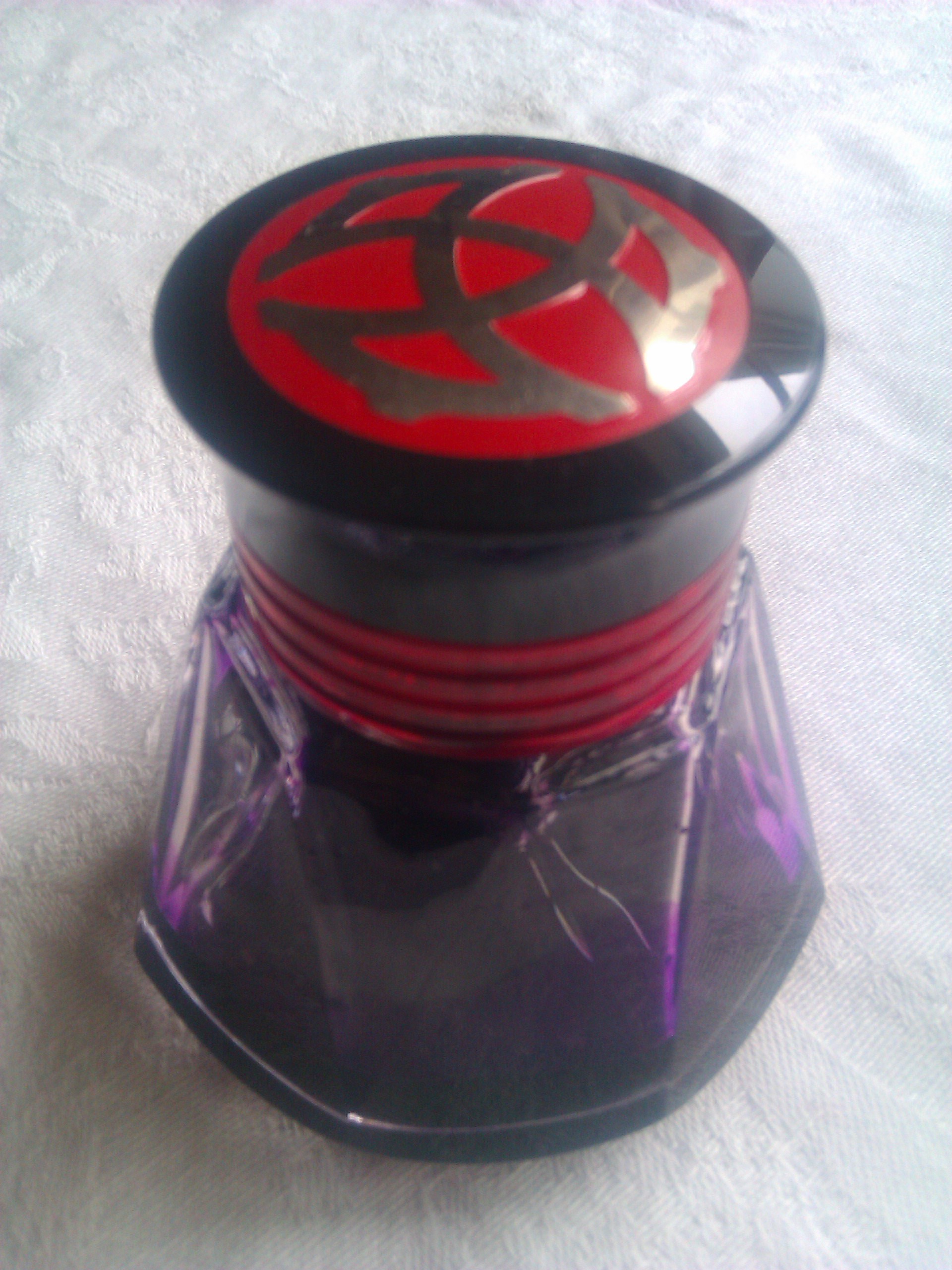
The next to enter my life was my first ever new pen: the TWSBI Mini, which I bought to reward myself for slogging through all 158,840(ish) words of the first draft. It’s another piston-filler; in fact, if you have a TWSBI ink bottle – which I do – the pen’s barrel can refill straight from the socket in the top of the bottle lid, without any of the messiness inherent in dipping a nib into the bottle.
Unlike all my other pens, it also has a clear barrel, so you can see how much ink is left at all times. This also makes it an ideal pen for using with coloured inks. Currently it contains Diamine Majestic Purple, thematic colour of ye olde WIP, and is used for notes and records thereon and thereof.
The fourth of my pens, a gift from my parents last Christmas, is undoubtedly the most aesthetically impressive to behold. (You can’t just look at this one. You have to behold it.) Almost baroque in its ornateness, it features a barrel of Papua New Guinean rosewood, and so much metal ornamentation I got pulled out of line and had my bag searched when going through airport security with it. It’s quite a heavy pen, so I don’t use it for long pieces of writing. It is best for using a) when one feels like being impressive and b) when one wishes to draw a satisfyingly final line through items on to-do lists.

It’s rather a wet nib (so it doesn’t care for everyday paper) and has a smallish (piston-filling) ink chamber, considering the overall size of the pen. It is also filled with my general use brown ink.
Finally, and most recently arrived in my collection of writing implements, there is a pencil. A reusable (i.e. mechanical) one, naturally, for the sake of the environment if not my laissez-faire attitude to getting up to sharpen things. It’s a Pilot Birdie, slim and silver and, well, small. It uses 0.5mm leads and is itself only 5mm thick. It’s designed for use as a notebook pencil, but hey – I’ve got small hands, and it sticks out far enough behind my hand to be comfortable to use. I got mine second-hand, so there’s not much eraser left, but that’s all right. I mostly wanted a pencil instead of a pen for my morning pages (which I’m thinking of shifting to nighttime) so that if I fall asleep mid-page I don’t wake up bathed in Havana Brown.